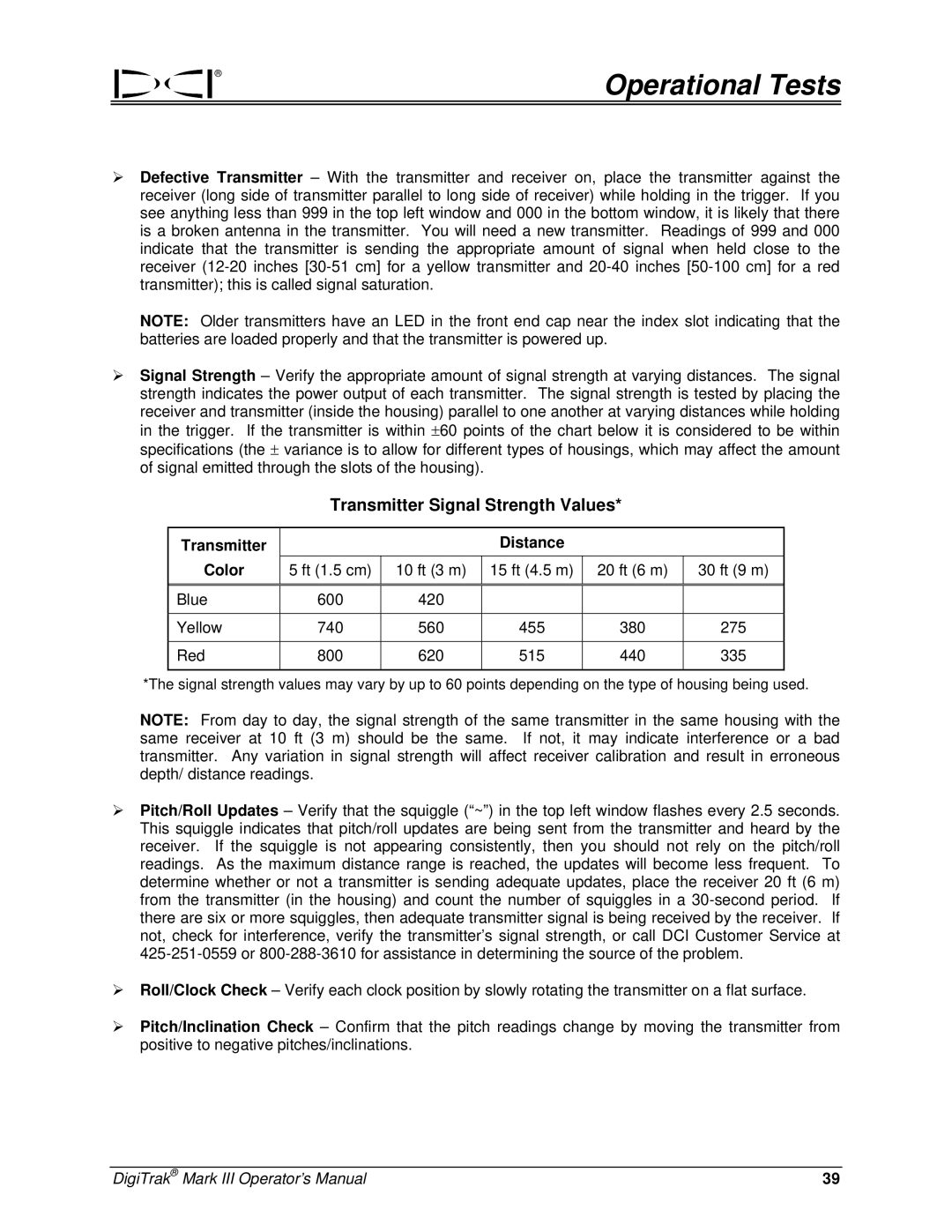
® | Operational Tests |
|
¾Defective Transmitter – With the transmitter and receiver on, place the transmitter against the receiver (long side of transmitter parallel to long side of receiver) while holding in the trigger. If you see anything less than 999 in the top left window and 000 in the bottom window, it is likely that there is a broken antenna in the transmitter. You will need a new transmitter. Readings of 999 and 000 indicate that the transmitter is sending the appropriate amount of signal when held close to the receiver
NOTE: Older transmitters have an LED in the front end cap near the index slot indicating that the batteries are loaded properly and that the transmitter is powered up.
¾Signal Strength – Verify the appropriate amount of signal strength at varying distances. The signal strength indicates the power output of each transmitter. The signal strength is tested by placing the receiver and transmitter (inside the housing) parallel to one another at varying distances while holding in the trigger. If the transmitter is within ±60 points of the chart below it is considered to be within specifications (the ± variance is to allow for different types of housings, which may affect the amount of signal emitted through the slots of the housing).
Transmitter Signal Strength Values*
Transmitter |
|
| Distance |
|
|
|
Color | 5 ft (1.5 cm) | 10 ft (3 m) | 15 ft (4.5 m) |
| 20 ft (6 m) | 30 ft (9 m) |
|
|
|
|
|
|
|
Blue | 600 | 420 |
|
|
|
|
|
|
|
|
|
|
|
Yellow | 740 | 560 | 455 | 380 | 275 | |
|
|
|
|
|
|
|
Red | 800 | 620 | 515 | 440 | 335 | |
|
|
|
|
|
|
|
*The signal strength values may vary by up to 60 points depending on the type of housing being used.
NOTE: From day to day, the signal strength of the same transmitter in the same housing with the same receiver at 10 ft (3 m) should be the same. If not, it may indicate interference or a bad transmitter. Any variation in signal strength will affect receiver calibration and result in erroneous depth/ distance readings.
¾Pitch/Roll Updates – Verify that the squiggle (“~”) in the top left window flashes every 2.5 seconds. This squiggle indicates that pitch/roll updates are being sent from the transmitter and heard by the receiver. If the squiggle is not appearing consistently, then you should not rely on the pitch/roll readings. As the maximum distance range is reached, the updates will become less frequent. To determine whether or not a transmitter is sending adequate updates, place the receiver 20 ft (6 m) from the transmitter (in the housing) and count the number of squiggles in a
¾Roll/Clock Check – Verify each clock position by slowly rotating the transmitter on a flat surface.
¾Pitch/Inclination Check – Confirm that the pitch readings change by moving the transmitter from positive to negative pitches/inclinations.
DigiTrak® Mark III Operator’s Manual | 39 |
